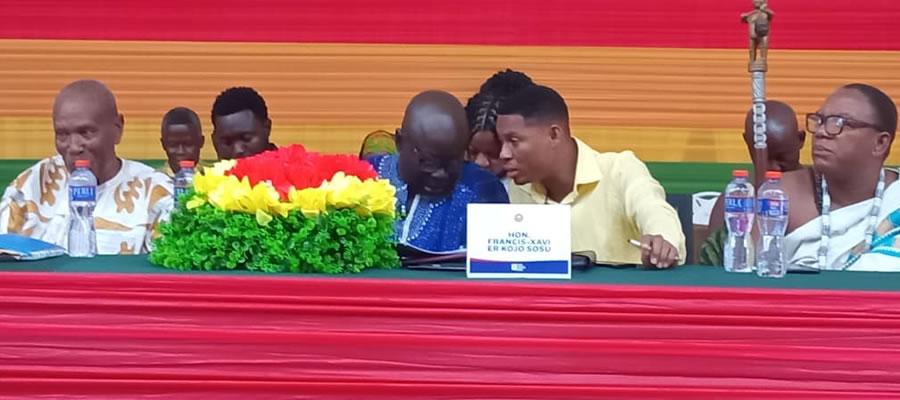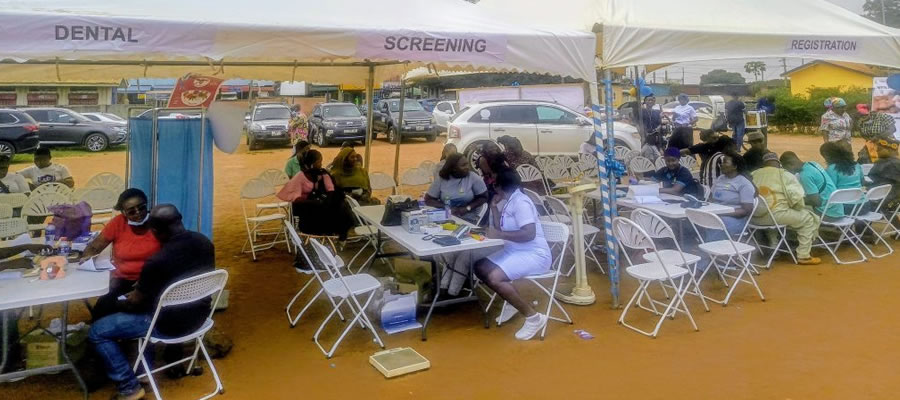

Geology and soils
The area is underlain by the Precambrian rocks of the Dahomeyan formation. A strain of metamorphic rocks mainly consisting of granite, gneiss and schist probably derived from sedimentary layers exist in the Municipality. These rocky formations are weathered at the surface and carried by run-offs towards the plains.
The geological formation of the Municipality has resulted in the prevalence of sandy loam soils in many parts of the Municipality. Five soil types are found in the Municipality namely; Fete Consociation, Nyigbenya Hatso Complex Association, Oyarifa-Manfe Complex Association, Danfa-Dome Association and Fete Bediesi Complex Association. Fete Consociations are very shallow, excessively well-drained, pale coloured sandy loam, and contains small pieces of rock on steep slopes.
These soils are found in the northernmost part of the Municipality towards the Akwapim – Togo Range. Nyigbenya, Hatso Complex Association can be found at Frafraha. They are well-drained, red, sandy clay loam to clay with abundant, rough stone concretions and quartz gravels. The Oyarifa-Manfe Complex Associations are located at Ayimensah, Adoteiman, Otinibi and Oyarifa.
These are deep, orange brown to bright red, sandy clay loam containing abundant ironstone concretions and gravels. The Danfa-Dome Associations are well drained concretionary clay loam; deep, plastic concretionary clay; yellowish brown with lime concretions; deep black, calcareous cracking clays. Found at Ayimensah, the Fete Bediesi Complex Association consisting of yellow, brown and alluvial sand; red, well drained sandy clay loam.
Climate
The Municipality lies within the dry equatorial climatic zone. It experiences double maxima rainfall of 700mm in the first rainy season and 770mm in the second rainy season. The Akwapim –Togo Range heavily influences the rainfall pattern of the Municipality. The northern side of the Range, which is on the leeward side, receives a lot more rainfall and moisture (in the form of dew) than other parts of the Municipality thus creating a somewhat distinct ecological zone. The average annual temperature ranges between 25.1o C in August and 28.4o C in February and March. February and March are normally the hottest months (Dickson and Benneh, 2001).
Relief and drainage
The land area of the Municipality consists of plains interspersed with undulating topography in the south and west. The Akwapim Range rises steeply above the northern part and lies generally at 375-420m south of Aburi and falls to 300m southwards. Major rivers and streams traversing the Municipality include the Sisami and the Dakubi.
Vegetation
The Municipality is dominated by two closely related vegetation types, namely; shrub lands and grassland. The grassland covers the low lying parts of the Municipality graduating into shrubs and wood thickets towards the northern part close to the Akwapim –Togo Range.
Date Created : 12/4/2017 6:10:11 AM









 facebook
facebook
 twitter
twitter
 Youtube
Youtube
 +233 593 831 280
+233 593 831 280 0800 430 430
0800 430 430 GPS: GE-231-4383
GPS: GE-231-4383 info@ghanadistricts.com
info@ghanadistricts.com Box GP1044, Accra, Ghana
Box GP1044, Accra, Ghana